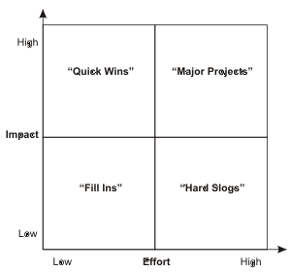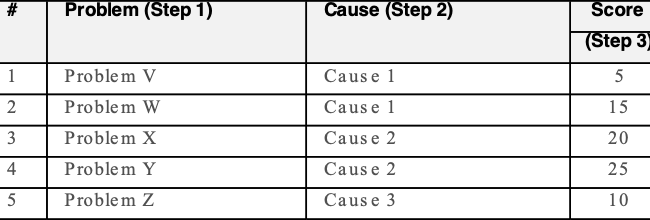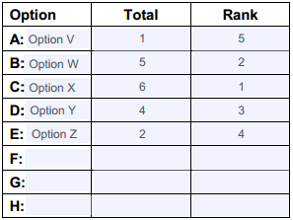In the previous post, a method for roadmapping that consists of 4 steps was described:
- Step 1: Gathering requirements and draft architecture vision for the roadmap
- Step 2: Assessing the current state
- Step 3: Designing future state and performing gap analysis
- Step 4: Producing the roadmap and preparing for migration
As part of step 4, when producing a roadmap activities need to be prioritized. One or more techniques can be used, depending on the organizational context and the type of roadmap to be elaborated to prioritize the findings from the gap analysis into a coherent, thoughtful set of ordered actions. The combination of techniques can contribute to get consensus on priority decisions.
In this article, some prioritization techniques that can be helpful is briefly described.
Paired Comparison Analysis
Paired Comparison Analysis is useful for weighing up the relative importance of different options. It’s particularly helpful where priorities aren’t clear, where the options are completely different, where evaluation criteria are subjective, or where they’re competing in importance.
- Make a list of all of the options that you want to compare. Assign each option a letter (A, B, C, D, and so on) and note this down.
- Mark your options as both the row and column headings on the worksheet. This is so that you can compare options with one-another.
- Within each of the blank cells, compare the option in the row with the option in the column. Decide which of the two options is most important.
- Write down the letter of the most important option in the cell. Then, score the difference in importance between the options, running from zero (no difference/same importance) to, say, three (major difference/one much more important than the other.)

- Consolidate the results by adding up the values for each of the options. You may want to convert these values into a percentage of the total score.
Action Priority Matrix
The Action Priority method is a quick and simple technique used to determine where the value of the candidate projects (tasks) is plotted against the level of effort or technical feasibility to deliver. This provides easy to see visual cues to quickly spot the “quick wins” and the greatest rewards in the shortest possible time. Business goals and objectives can be used as value criteria.

The figure shows the basic form of the Action Priority Matrix. The principle behind using the tool is that you score each activity you want to complete
Pareto Analysis (80/20 rule)
Pareto Analysis is a simple technique for prioritizing problem-solving work so that the first piece of work you do resolved the greatest number of problems. It’s based on the Pareto Principle (also known as the 80/20 rule) – the idea that 80 percent of problems may be caused by as few as 20 percent of causes.
To use Pareto Analysis, identify and list problems and their causes. Then score each problem and group them together by their cause. Then add up the score for each group. Finally, work on finding a solution to the cause of the problems in group with the highest score.
Pareto Analysis not only shows you the most important problem to solve, it also gives you a score showing how severe the problem is.
- Make a list of the problems that you need to resolve.
- Identify the root cause of each problem
- Score each problem. The scoring method you use depends on the sort of problem you’re trying to solve.

- Group problems together by root cause
- Add up the scores for each group. The group with the top score is your highest priority, and the group with the lowest score is your lowest priority.
Cause 1 has a score of 20
Cause 2 has a score of 45 → highest priority
Cause 3 has a score of 10

